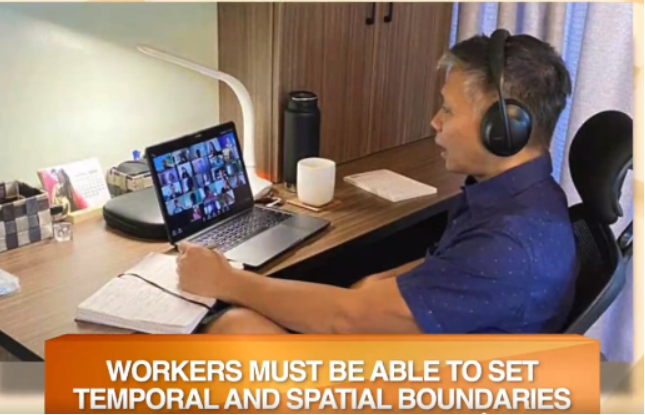Nearly 70 percent of surveyed gov’t workers prefer telework

“Our survey results indicate that almost 70% of our respondents prefer to telecommute over physical reporting for work after the lifting of the national public health emergency,” Dr. Rowena Paz L. Gelvezon, professor at the University of the Philippines-Visayas and project leader of Telecommuting Preferences of Government Workers in the Philippines (TeleWork@PH) research, said.
Gelvezon added that this may indicate an evolving concept on how work is viewed, that is, work is something that people do, not someplace that people go to; that work need not be performed in a specific physical work site nor performed in mandated work hours, but work is something that can be accomplished anywhere and anytime.
The TeleWork@PH is a part of a three-component study, wherein the other two are the Government Telecommuting Infra Cost Estimator (GTWICE) and the other is a Modeling Analysis of Telework Impact in the New Normal (MATINO), which are tools developed to help employers and employees determine the cost and suitability of telework in an organization.
The TeleWork@PH research, which intended to examine the telecommuting preferences of government workers in the Philippines, is based on a survey of 16,159 online respondents who are government workers in selected government agencies from 22 highly urbanized cities in the country. The data was collected between May to December 2021.
Among the reasons cited for government workers’ preference to telecommute are these:
“I want to work during my most productive time and pace;”
“I want to lessen time spent on commuting to/from work;”
“I want to save on my travel expenses;”
“I want to spend more time with my family;”
If there’s an upside to telecommuting, there are also downsides, such as workers experience stress while working remotely because of slow internet connection; learning new applications causes stress; overlapping work schedules, and multiple work responsibilities; unclear work expectations and less work peer support, or the nature of work is not suited to telework, and others.
While Gelvezon believes that there’s a future for telecommuting, it is, however, not for all types of work nor it is for all types of workers. It’s important to have agency-specific policies and guidelines on telecommuting.
Dr. Ryan Vicerra professor at the De La Salle University and project leader of GTWICE, said that there should be a corresponding training that should go along with requiring an employee to telework.
“Hindi talaga natin madedevelop yung telework culture kung takot tayong magsimula at takot tayong pag-usapan,” Vicerra said.
The other component of the project, which is the MATINO, being led by Dr. May Lim of the University of the Philippines-Diliman, is a telework calculator website that allows users to input variables in order to compute an estimated impact of their proposed teleworking scheme.
Lim explained that the goal of MATINO is not just to give users the numbers, rather to give users a set of questions, wherein after answering those questions, the users, who are employers and employees, would be able to discuss.
“You start discussing it because you need to find the solution and the solution’s something that both parties could agree on,” Lim emphasized.
Lim believes that telework is here to stay, but it’s not going to be the telework that people are seeing now. There’s a need to improve a lot of things – the technology, the way technologies are incorporated, the value being given to telework, and a lot of things that are still evolving.
“The idea is we want a more caring, we want na may community tayo, we want things to be better and telework is just one component for that to happen,” Lim pointed out.
Telework@PH is a project funded by the Department of Science and Technology-National Research Council of the Philippines (DOST-NRCP) as part of their Kapakanan ng Tao sa Oras ng Pandemya (KTOP), an R&D priority area which focused on the socio-economic dimensions of the pandemic.” (Geraldine Bulaon-Ducusin, DOST-STII)

